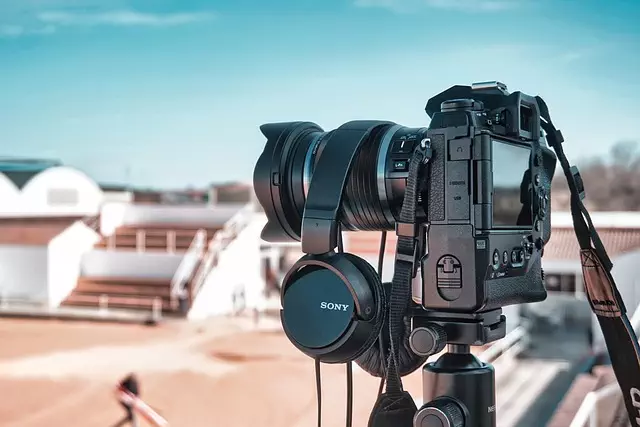TL;DR:
DivX offers significant benefits for video editors and content creators through high-quality compression, broad device compatibility, and efficient file size reduction. Easy conversion methods using modern video editors like Adobe Premiere Pro and VLC ensure seamless integration into workflows, enabling tasks such as trimming, effects application, and color corrections without quality loss. Its versatility, reliability, and straightforward conversion process make DivX a popular choice for both amateur and professional video editing, catering to the latest technologies and platforms. Learn how to convert DivX files using these simple methods for optimal editing and sharing experiences.
Introduction:
DivX, a powerful video compression format, offers unparalleled flexibility for video editors and enthusiasts. This article delves into the benefits of using DivX for seamless video editing, highlighting its advantages in file size reduction without sacrificing quality. We’ll guide you through a step-by-step process of converting DivX files, from choosing the right tools to optimizing settings. Learn advanced tips for efficient manipulation, ensuring you harness the full potential of DivX for your video projects. Discover how to navigate the conversion process smoothly with our comprehensive SEO-optimized tutorial on How to Convert DivX.
Understanding DivX and Its Benefits

DivX is a video compression format known for its high-quality encoding and efficient file size reduction. It offers a range of benefits, particularly for users looking to edit or manipulate video content. One of the key advantages of DivX is its compatibility with various devices and media players, making it easy to share and view videos across different platforms. This versatility is especially useful for content creators and editors who need to work on multiple projects with diverse requirements.
When it comes to editing, understanding how to convert DivX files can streamline the process. Converting DivX allows for easy access to video footage in a format that supports advanced editing tools. Many modern video editing software programs are optimized to handle DivX, enabling users to trim clips, add effects, and apply color corrections without encountering compatibility issues. This accessibility has contributed to DivX’s popularity among professionals and hobbyists alike, who appreciate its balance between quality preservation and file size optimization during the conversion process.
– What is DivX?

DivX is a video codec, or compression technology, designed for efficient and high-quality video encoding. It’s widely known for its ability to compress videos while maintaining excellent picture clarity, making it popular for both online streaming and offline video storage. DivX supports a wide range of video formats, including MPEG-4, H.264, and H.265, allowing users to easily convert and play back videos on various devices.
When it comes to how to convert DivX, the process is straightforward. Many modern video editing software and online tools offer direct support for DivX, enabling you to import, edit, and export files with ease. For instance, popular video editors like Adobe Premiere Pro, Final Cut Pro, and even free options like VLC Media Player can handle DivX without any additional plugins or conversions. This makes it convenient for users to work with DivX videos, ensuring they remain compatible with the latest technologies and platforms.
– Advantages of using DivX for video editing.

DivX, a versatile video codec, offers significant advantages for those engaged in video editing due to its efficient compression and high-quality output. It enables users to reduce file sizes while maintaining excellent visual fidelity, facilitating easy storage, sharing, and streaming of videos. This makes DivX an ideal choice for both amateur editors looking to streamline their workflows and professionals requiring reliable, high-performance codecs for demanding projects.
Converting videos to DivX is a straightforward process that involves using compatible video editing software or built-in tools. By leveraging DivX’s capabilities, users can easily trim footage, apply special effects, add transitions, and mix audio tracks without sacrificing quality. This flexibility allows for creative expression and ensures that the final product meets the desired specifications, whether it’s for personal use or professional distribution.
In conclusion, DivX stands as a powerful tool for video enthusiasts and editors alike, offering seamless manipulation and editing capabilities. Its unique format facilitates efficient data handling, making it an excellent choice for those seeking to optimize their video projects. By learning how to convert DivX files, users can unlock the full potential of this versatile codec and create high-quality videos with ease.
